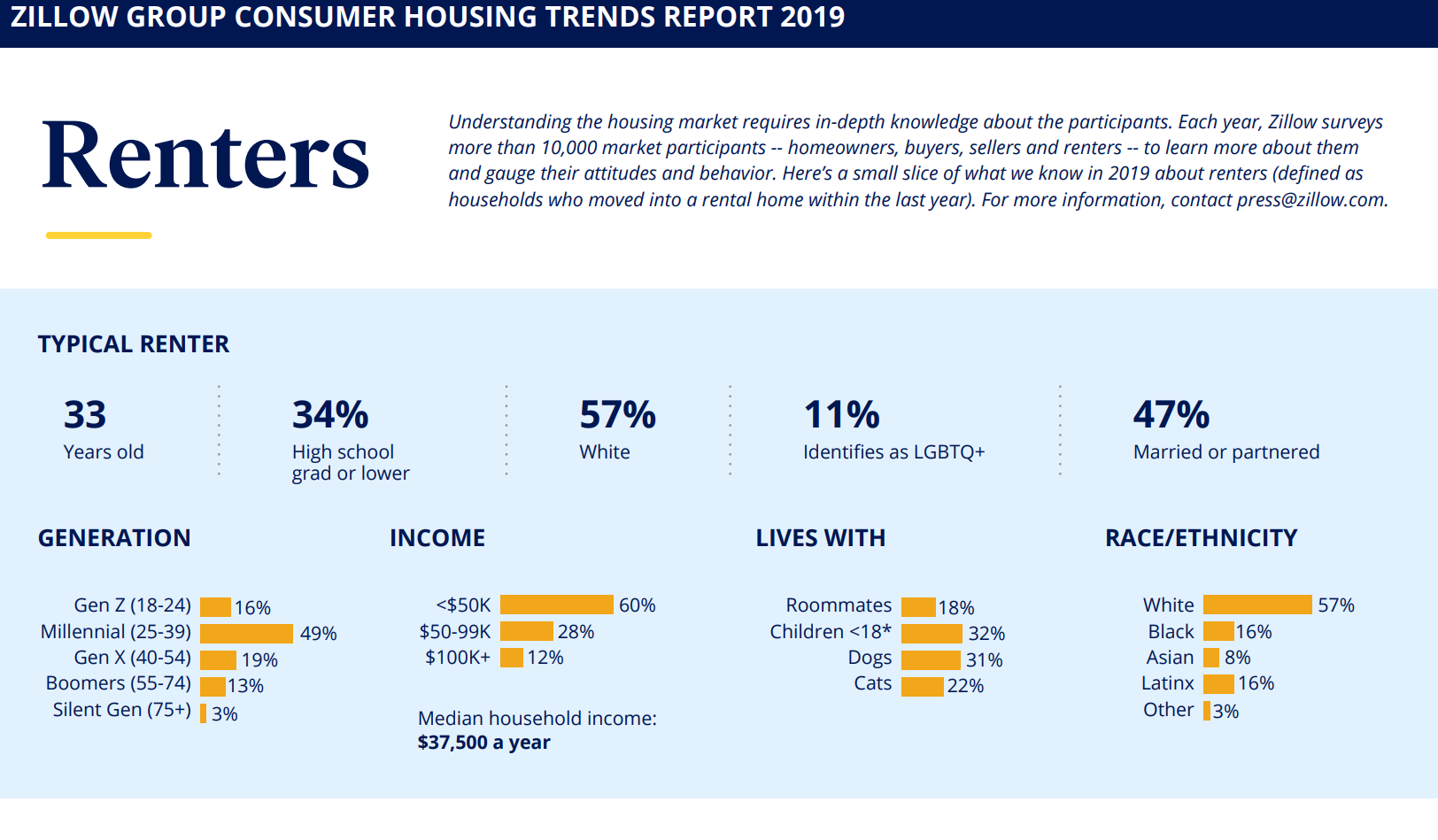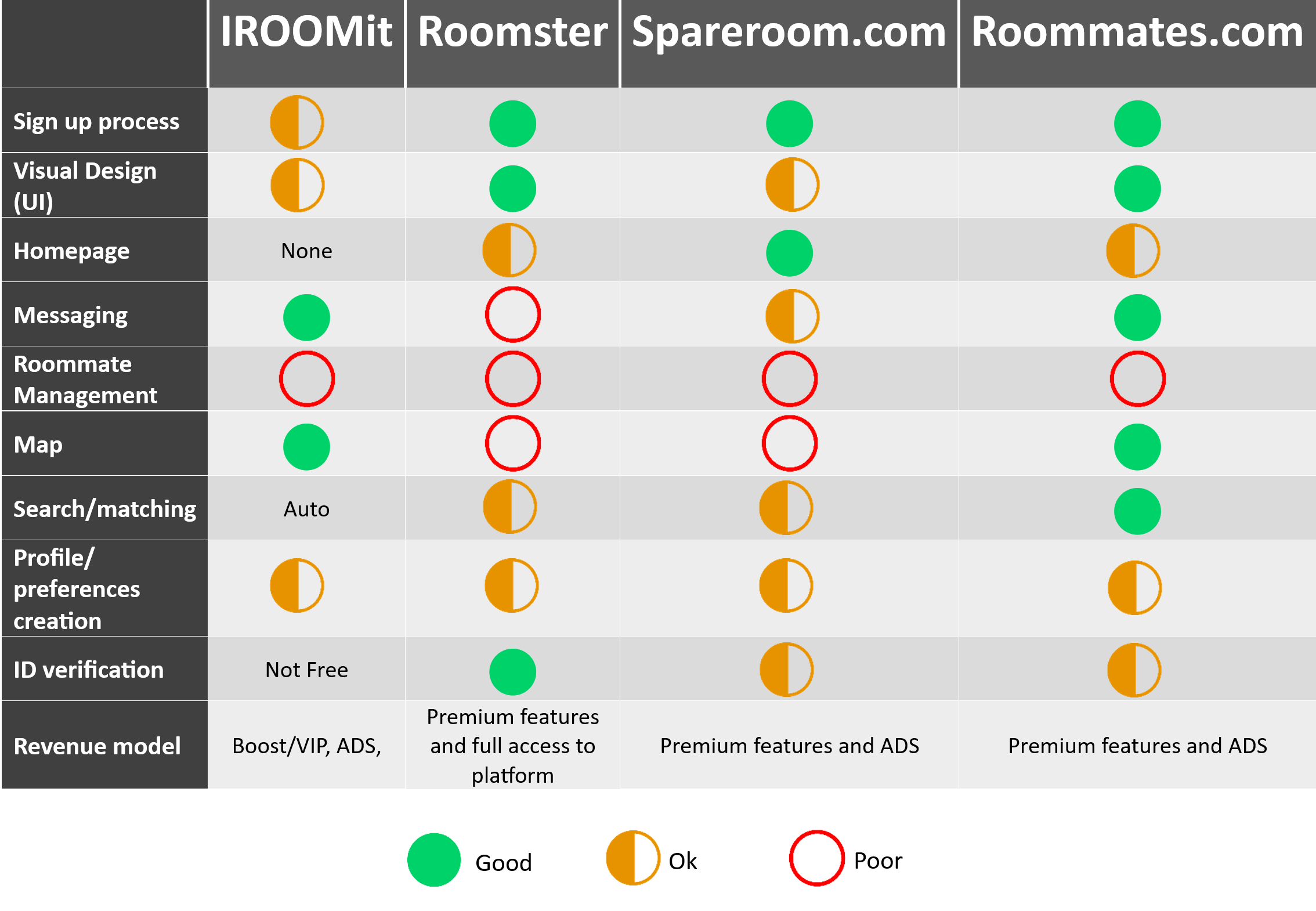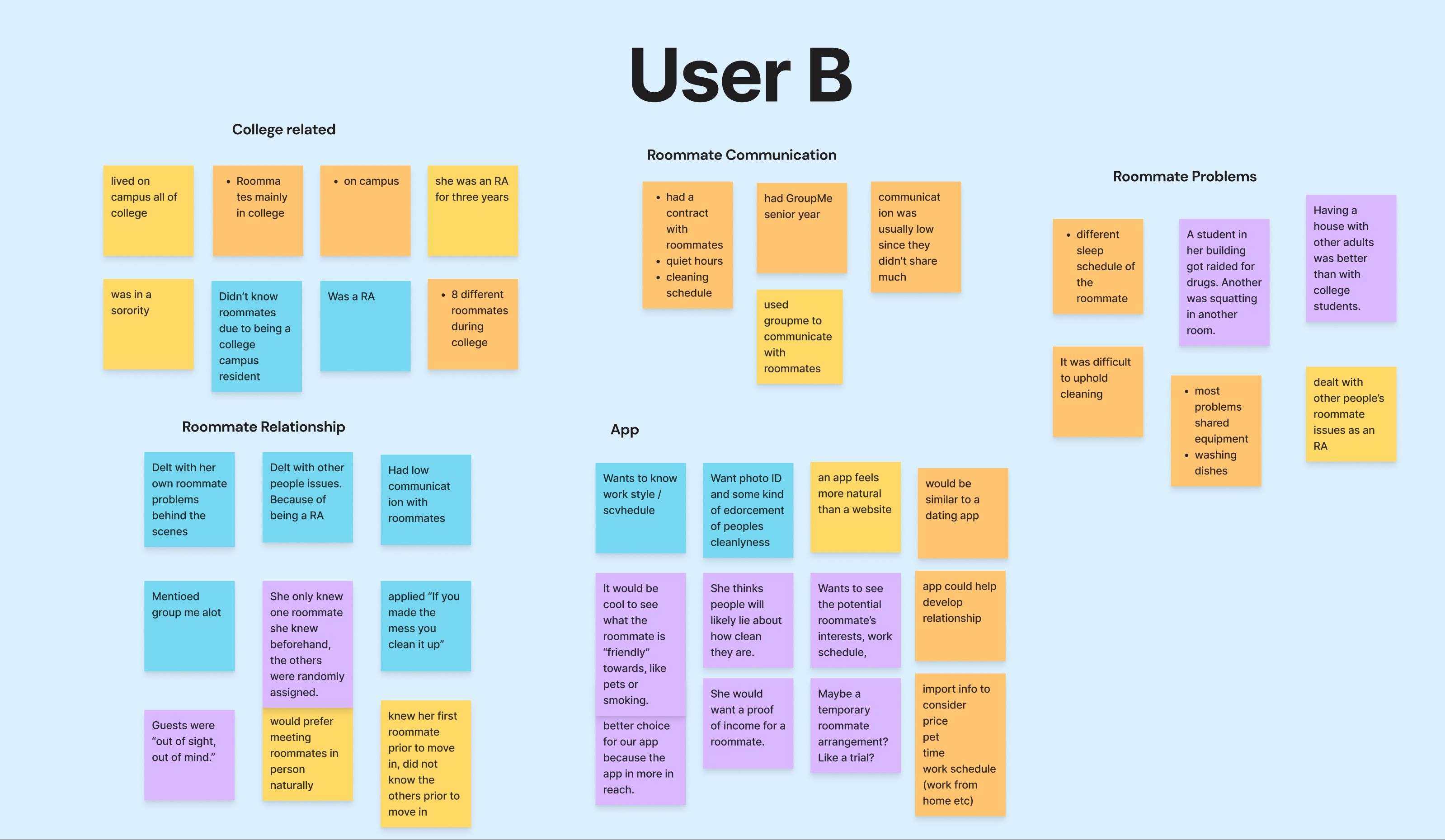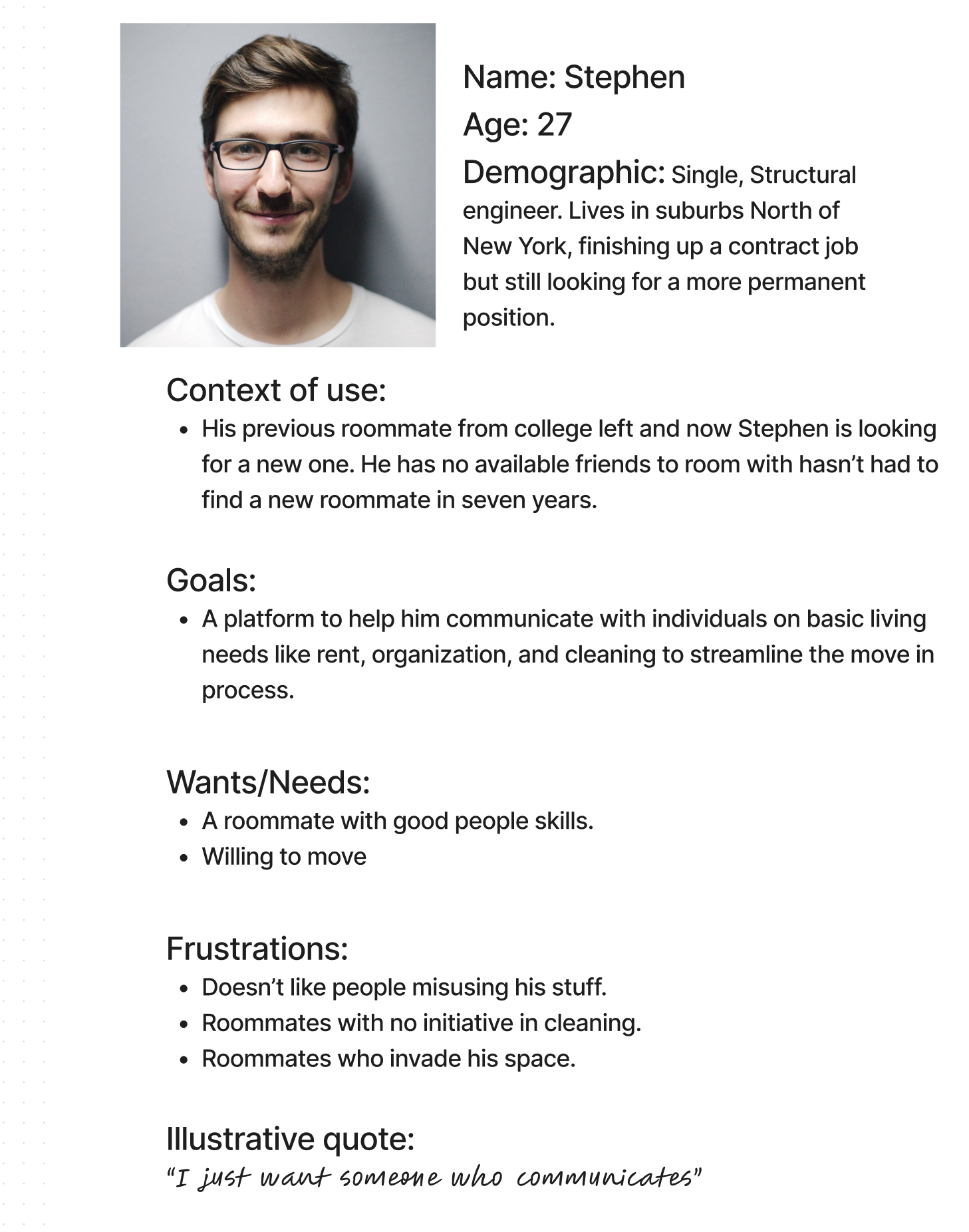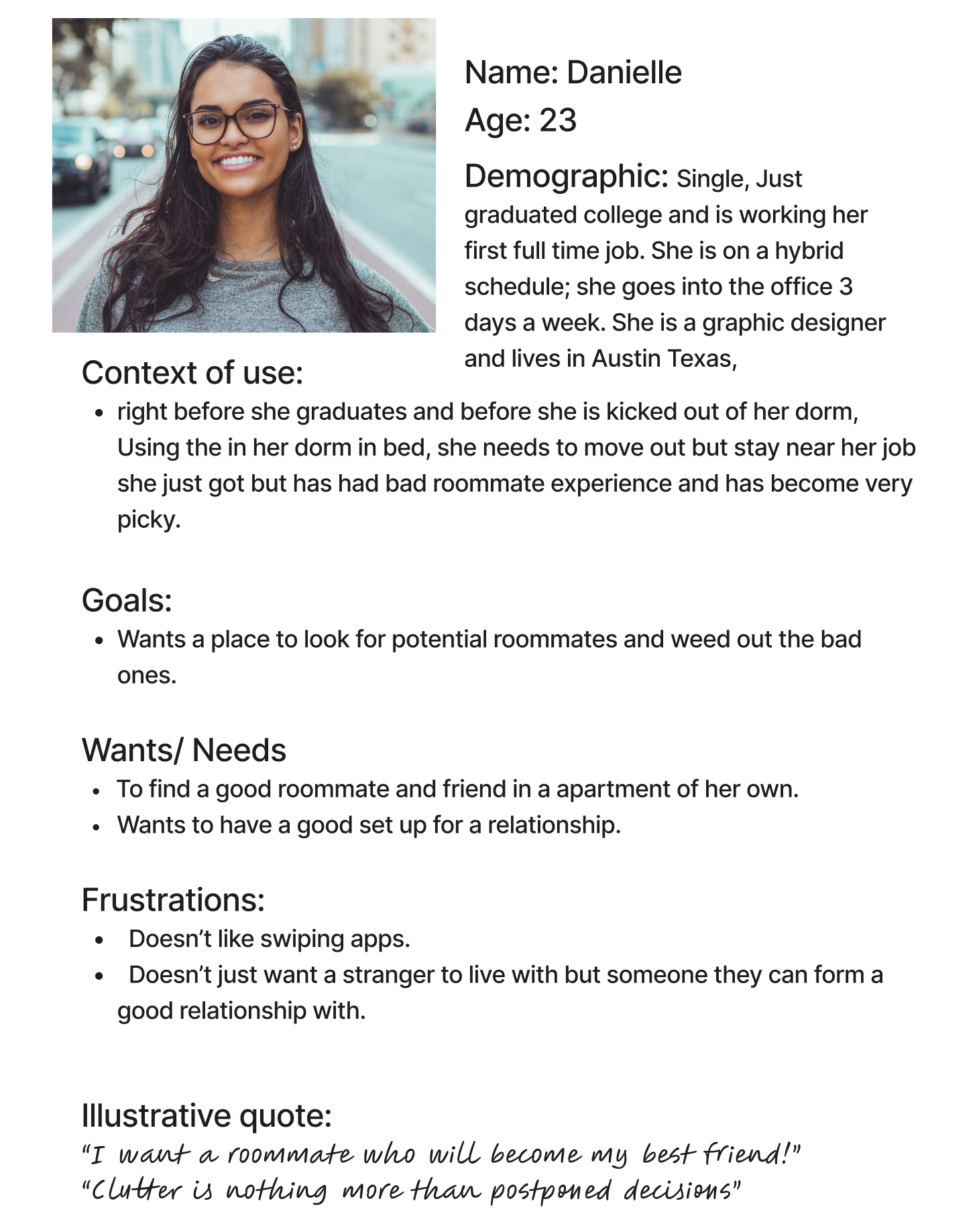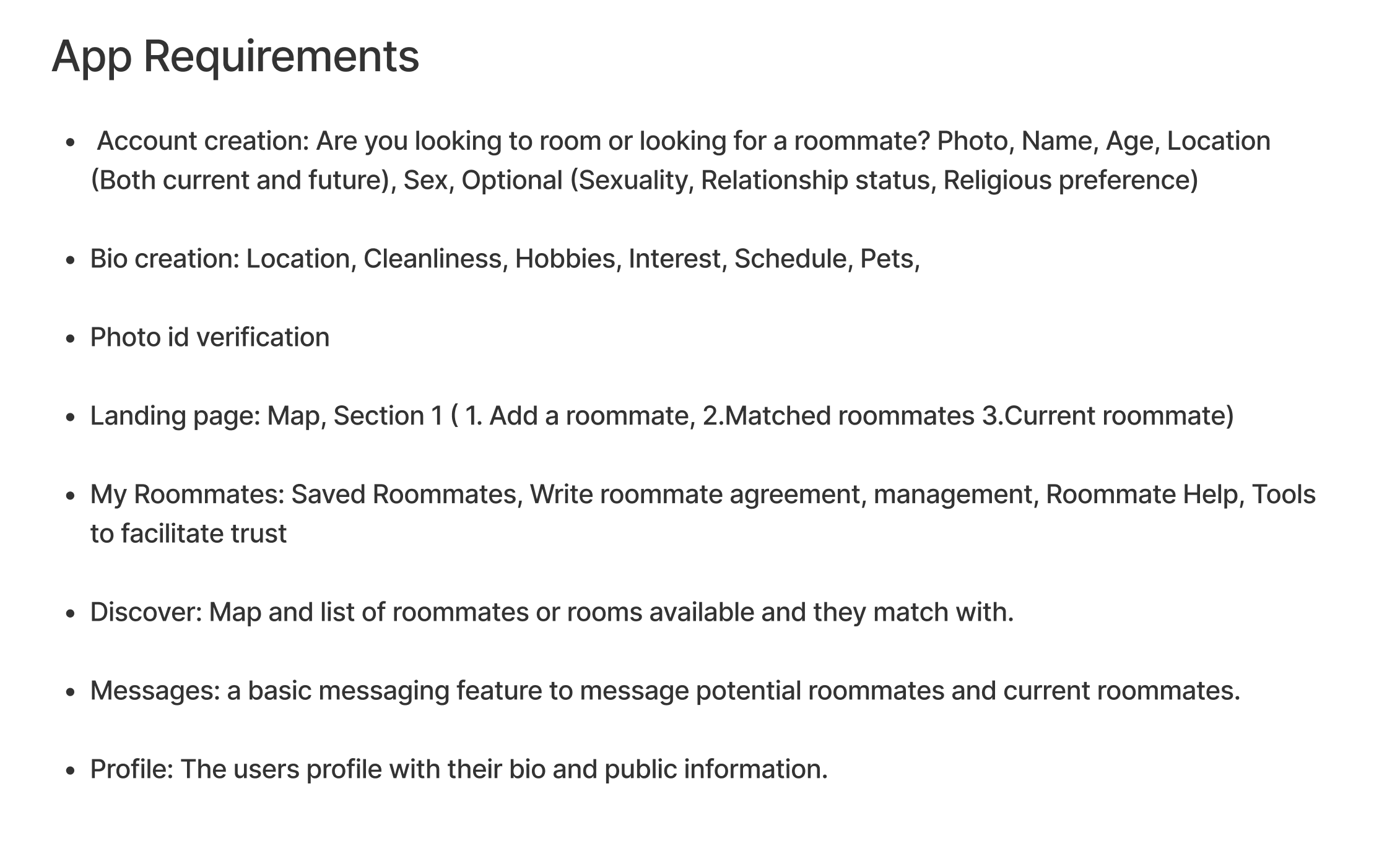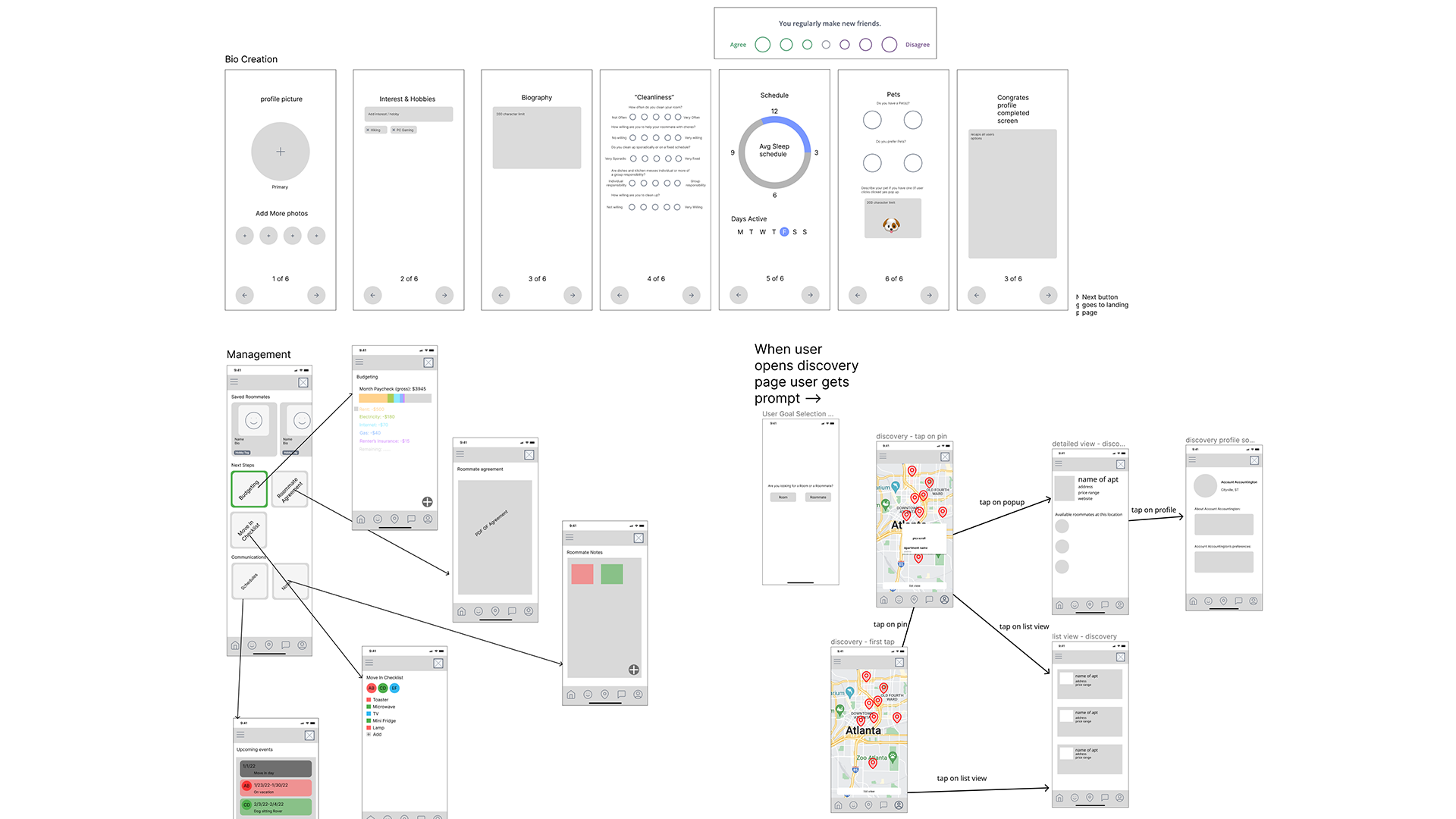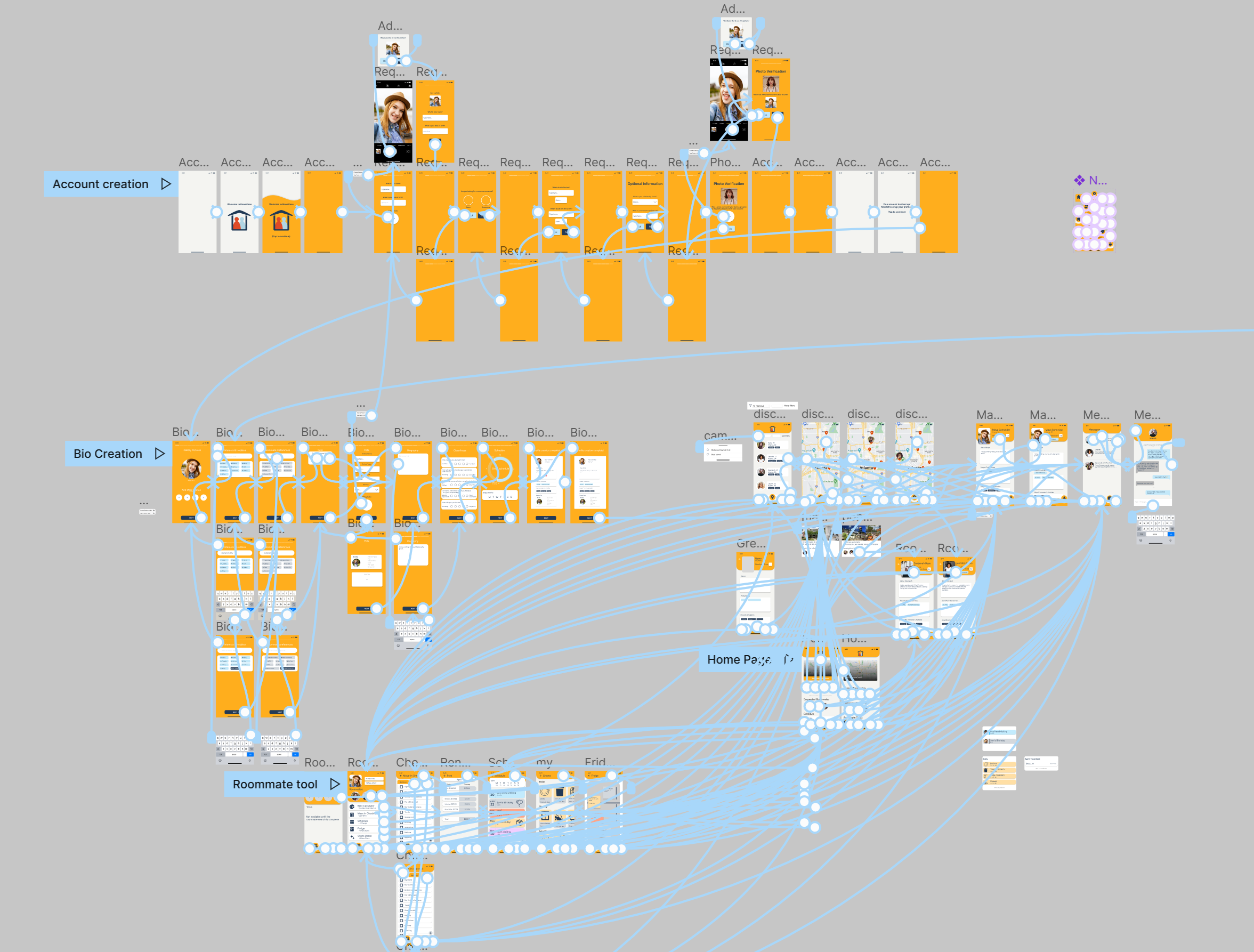Responsibilities
- User Research
- User Interviews
- Usability Testing
- Wireframing
- Prototyping
- Visual Design
Project Context
- Duration: February 2023 - April 2023
- Approach: Goal-Directed Design
- Tools: Figma
The Problem with finding a roommate
The current state of roommate matching has primarily focused on matching people with the closest available individual instead of establishing a foundation and promoting ongoing communication. Existing products fail to address the ongoing facilitation of communication that maintains a healthy and safe living environment.
Our product will address this gap by matching users to a catalog of available roommates in their area based on lifestyles, personality traits, hobbies, and schedules, while also providing a platform to establish communication and trust.
We will do this by implementing the goal-directed design process. This design methodology focuses on the behavior needs and goals of the user. This allows for the creation of human centered designs and design decisions that are tailored to the users needs and preferences which allow for more rich and positive user experience. Below we will quickly go over our proposed solution to this roommate problem, give a bit of context and backstory to this project overall, and get started with the research phase of GDD.
A solution for the perfect roommate
A roommate management app that matches users to a list of potential matches based on their personality traits, lifestyles, and schedule while also providing a platform to establish communication trust.
Interactive map
Simplify your search: Discover local rooms and roommate matches with our easy-to-use interactive map.
Bio personalization
Seamlessly Customize Your bio to reflect your lifestyle and schedule! Tell others your story, and why living with you is the right fit!
Management
Find Harmony in coordination: Manage roommates effectively with our comprehensive All-in-One Tool solution including a Rent Calculator, Checklists, Notes, and Chores tab!
Backstory
So this problem originated as an idea from our group members I teamed up with, they wanted to create a roommate management app that they would have liked going through college as they had a tenuous history of bad and unreliable roommates. They wanted to create a solution that could not only help college students that maybe didn't know anyone as well as just other people that wanted a comfortable living environment in this increasingly difficult economy.
Research
The goal of our research was to get clarification on two main issues. The first issue was why are people living with roommates and what factors are most important when looking for one. And the next problem was, what are some of the biggest pain points that come with a shared living environment?
Literature review
Through our literature review, we delved into the economic landscape and historical context of shared living spaces in the US. Our research encompassed housing data from the aftermath of the Great Recession to examining the financial sacrifices people had to make to afford rent in the late 2010s. We also explored articles shedding light on roommate conflicts and the detrimental impact of stressful and negative roommates on an individual's mental health. Notably, we think some key findings emerged from the Zillow report on customer housing trends in 2019:
26% of renters find it difficult to afford their rent and 66% of renters make at least one sacrifice to afford their rent.
Based on this report 18% of renters have roommates and we can only assume that this number would increase with the financial hardships and economic climate of America during and after the covid-19 pandemic.
Competitive Audit
We conducted a detailed competitive analysis to assess the priorities of our competitors and identify what areas we could improve in. Our goal was to identify successful features that were already established in the room and roommate finding space. Through our analysis, we made two valuable discoveries.
1. We didn't need to reinvent the wheel for certain features such as basic sign-up, Messaging, ID verification, and Maps as industry standards were already well established.
2. We identified significant opportunities to stand out and innovate in the realm of roommate management. .
Approaching the problem
In this section, I'll go over how my team and I sought to solve this roommate problem. We'll go through the user interview process, the creation of affinity maps and personas, and the requirements phase of goal-directed design.
User Interviews
To complement the quantitative data we acquired within the room and roommate finding space, we wanted to gather qualitative insights directly from potential users. Our objective was to supplement existing information and uncover common pain points with current platforms. Employing a mix of online platforms including Discord and Zoom we conducted six end depth interviews. Below are Key findings that were sourced and synthesized from our affinity Maps.
Roommate preferences
- Users mentioned the importance of lifestyle compatibility, preferring those with basic social skills and cleaning habits
- low maintenance roommates
- Compatibility based on shared interests, hobbies, and sleep schedule
Communication
- Communication plays a significant role in avoiding conflicts
- Contracts, quiet hours, and clean schedules for mentioned as important for roommate agreements
- Having a maintenance platform that encouraged basic communication but wasn't too cumbersome
App preferences
- Users Express a desire to know potential roommates' work schedule
- Photo ID verification mentioned as a desirable feature and even preferred for establishing trust
- A app was preferred over a website with similarities to dating app platforms in terms of functionality
- Privacy concerns were raised regarding sharing personal information such as income and health issues
Personas
Using our identified key findings and data from our affinity maps we created our primary and secondary personas. Stephen and Daniela are evidence base personas created through trends of user behavior patterns we discovered during our research process and interviews. They represent the main target users of our app. Moving forward in the design process we will be focusing on their needs and helping them complete their goals.
Implementing a Design
Finally, we get to the framework and refinement phase of Goal-Directed design. Here we will go over the lo-fi wireframes and keypath scenarios. Lastly, we implemented visual design, brand identity, text hierarchy, and more, to create our final product prototype.
Wireframing
Here you can see some earlier iterations of our designs and user flows. While a few concepts didn't make it and some screens were adjusted based on feedback these low fidelity wireframes really helped us experiment and gauge the functionality of our app.
Usability Testing
Lastly, I don't want to forget our usability testing, this was a crucial part of our refinement phase as we held five interviews with potential users going over our prototype. They gave us feedback on interactions, readability, and overall problems they had which allowed us to make a few final adjustments before our deadline.
Final Prototype with feedback from usability testing
Obstacles and challenges
Time management and team communication
- Looking back at our group and time management, there were certain aspects of the GDD process we glossed over that we shouldn't have originally. Understandably for the sake of time but definitely hurt our project's depth.
- Communication was handled in person and online and there were not any serious issues I felt like our team as a whole could do a better job at weekly checkups, accurately explaining what they were doing, and just in general taking and receiving criticism and feedback.
Task management and scope creep
- I felt like a group was always a little disorganized and never had a great grasp of the task at hand. This Disorganization and confusion led to scope creep as so many ideas were being brought to the table that our core vision was clouded and I felt wasn't executed to its fullest potential.
Conflict management and administrative direction
- When conflict arose or disagreements were had most of the time they were dealt with civilly, but definitely put a hindrance on communication and time efficiency.
- Sometimes the direction of some features and design decisions were skewed amongst group members and issues weren't noticed until the last minute or got completely overlooked.
In retrospect
There are a lot of things I would do differently if I could redo this project. I'd spend more time focusing on our problem space and how our product would be useful and different from the competition. I'd focus less on quantitative data and more on qualitative data like conducting a lot more user interviews and usability tests. Lastly, I felt like we tried to reinvent the wheel on a lot of features that we really should have just taken inspiration from our competitors, to have more time on the features and user flows that resolved our personal needs and goals.
But even with all the things I've listed that went wrong and I would changed I really enjoyed working on this project as it pushed not only my visual and interface design skills but user research and cognitive psychology knowledge.
Thank you for reading!
